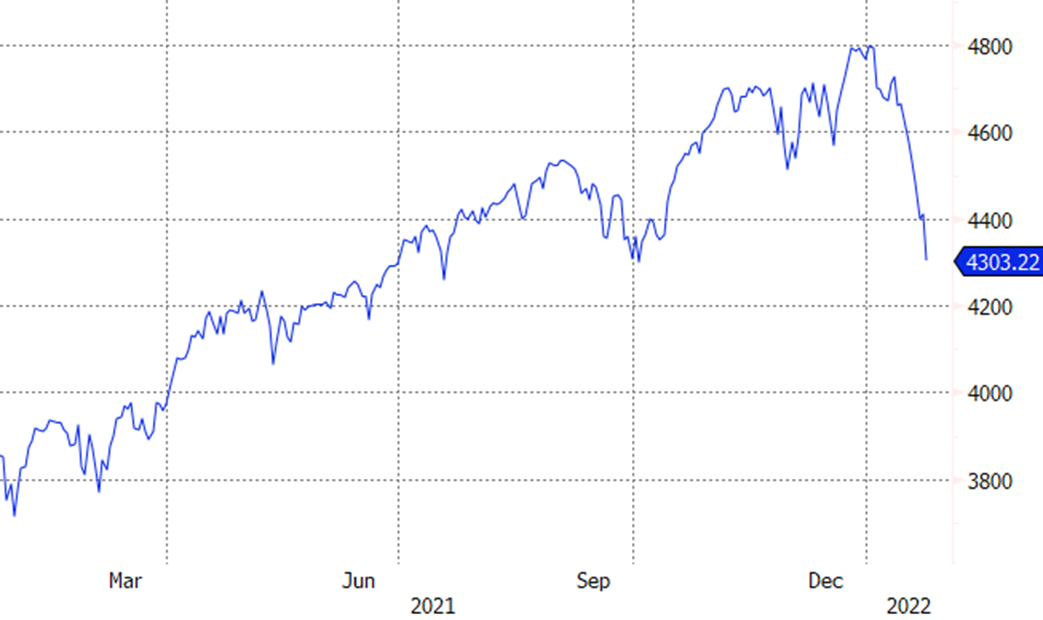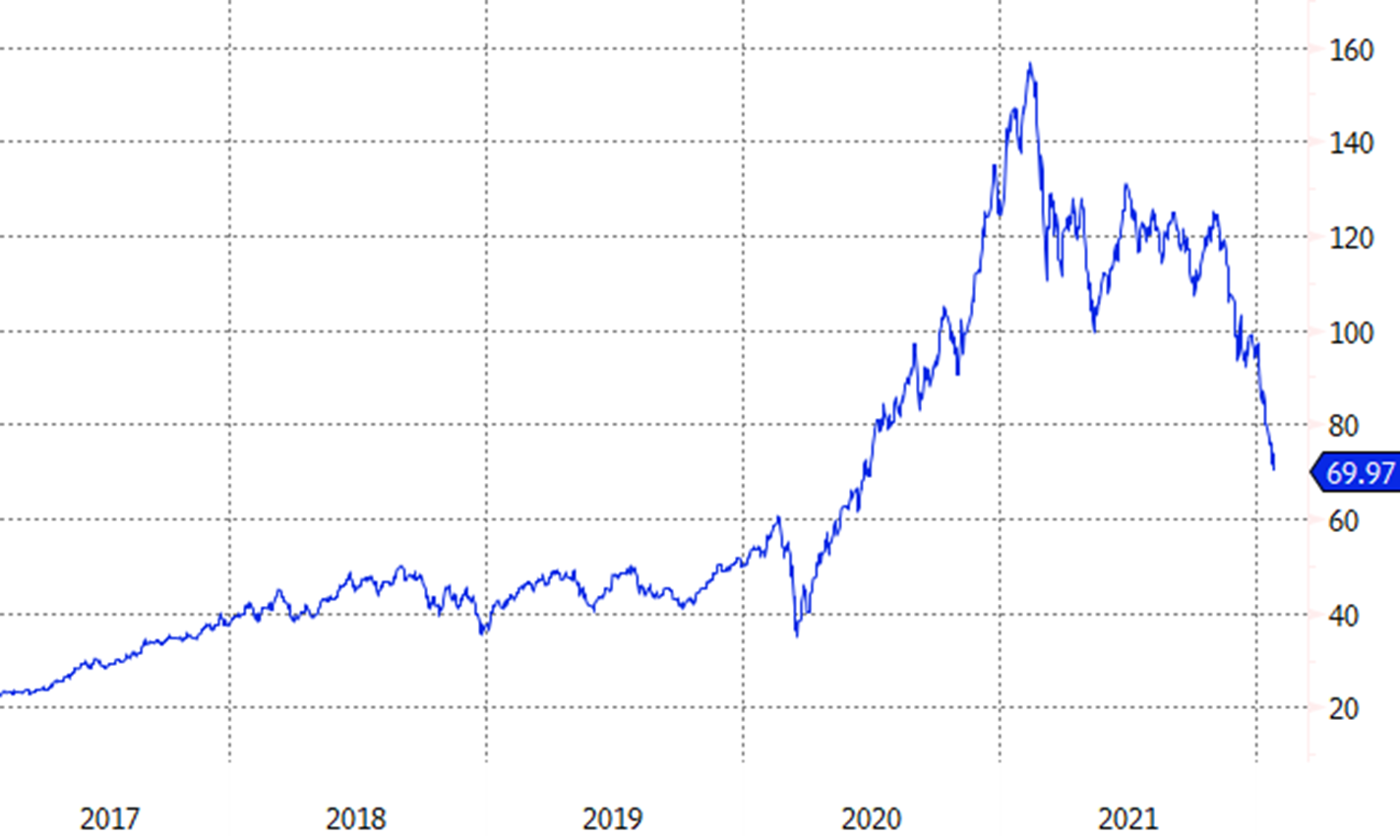Investors have not seen volatility like this in quite a while. On Monday, the iShares Core S&P 500 UCITS ETF (CSPX) dropped nearly 4% intraday before staging a furious rally that pushed the ETF up 0.4% on the day.
It was a similar situation for the Invesco EQQQ Nasdaq 100 UCITS ETF (EQQQ). In a matter of hours, a 5% loss turned into a 0.5% gain.
Wall Street’s “fear gauge,” the Cboe Volatility index, spiked to almost 39 – its highest level since October 2020, before retreating modestly.
Today, the markets look set for another wild ride, with stocks plunging again at the open.
Chart 1: S&P 500 performance

Worries pile up
This type of volatility is a reflection of the worries that have piled up over the course of the last few months. Pockets of the market, like the high-growth/high-valuation tech group, have been under duress for quite a while.
The poster child of this weakness, the Ark Innovation ETF (ARKK), has been sliding for the better part of the last 11 months, though its descent really started to accelerate in November. It is no coincidence that, around that time, Federal Reserve chairman Jerome Powell made a surprisingly hawkish pivot in his monetary policy stance.
Ever since then, rate hike expectations have soared. The two-year US Treasury bond yield has doubled since November, from half a percent to 1%. Meanwhile, traders expect at least three rate hikes this year from the Fed.
The anticipation of higher rates is what kicked off the carnage in high growth stocks, though the panic has since spread beyond just that one part of the market, and likewise, concerns have multiplied beyond just interest rates.
Now, along with higher rates, investors are worried about slowing economic growth, as well as geopolitical tensions related to Russia and Ukraine.
Chart 2: ARKK performance

From greed to fear
What was a euphoric market only weeks ago is suddenly a very fearful one. A lot of it also has to do with rates; but much of it also has to do with price declines begetting more price declines.
The drawdown in certain high growth names has been gut wrenching, which has no doubt spurred panicked and forced selling by many, especially overleveraged hedge funds and retail investors.
At its worst point on Monday, ARKK was down a whopping 58.4% off its high set last February. It was down 31% in just the first three weeks of the year.
Even CSPX was down 12% off its highs, putting it in what many consider “correction” territory, while the Vanguard Information Technology Index Fund (VGT) was down 18.3% off its peak level, placing the tech sector on the verge of what some consider a “bear market”.
According to Bloomberg, the S&P 500’s 11% decline through the first 16 days of January is its worst-ever start to a year in history.
More than just rates
Lending credence to the idea that the market’s drawdown has been due to much more than just a fear of higher rates is the trajectory of the 10-year Treasury yield and market-based inflation indicators like the five-year breakeven rate.
Though it broke out to a new post-pandemic high of 1.9% last week, the 10-year high currently hovers near 1.75% – exactly where it was at its 2021 high last March, and only 5 basis points up from where it was in October, well before this cascading sell-off in tech and growth stocks began.
Chart 3: 10-Year Treasury bond yield

Meanwhile, the five-year breakeven rate, a market measure of inflation, is currently around 2.8%, down from its 3.2% November high and only 3 basis points more than its high of last year.
In other words, the same signals are being interpreted much differently by the market today compared to a few months ago. Some things have changed (short-term rates are higher, for instance), though not as much as the market movements would suggest.
Perhaps what has changed most significantly is uncertainty. There are just more unknowns now. How inflation and the rate hike cycle will play out is a big unknown. How the Russia-Ukraine situation plays out is another unknown. The Treasury market is pricing in one scenario that is relatively benign, but that could change.
And with investors in a “sell first, ask questions later” mood, none of this is comforting for investors. That’s the nature of the market: Sentiment can shift on a dime and is often is the biggest driver of performance over the short term.
Longer term, the outlook for profits, the economy and rates will start to come into clearer focus, and stocks will start moving based on fundamentals again.
This story was originally published onETF.com


